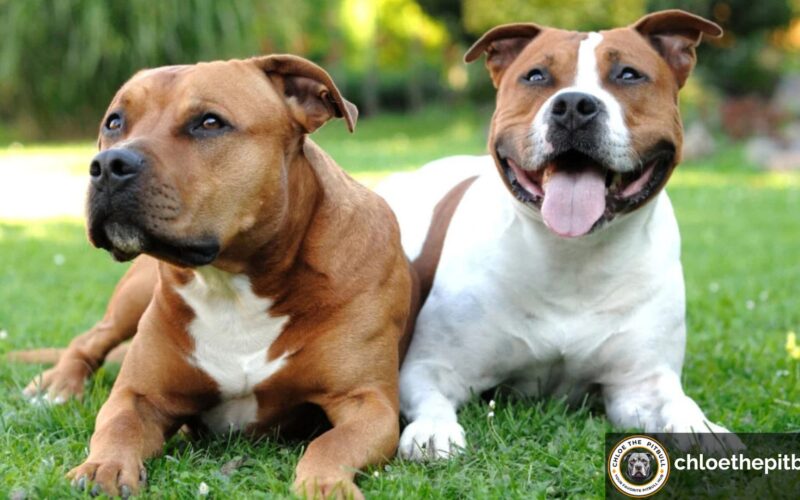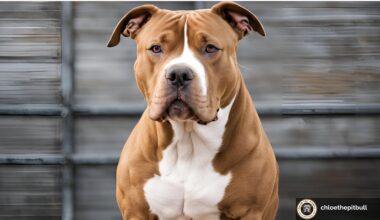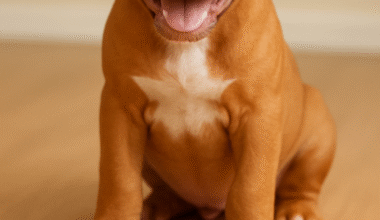Ever look at two Pitbulls and wonder how they could be the same breed? You might see one Pitbull that’s a muscular powerhouse and another that’s lean and agile. This can leave you wondering: ‘What is the average Pitbull weight?’ The truth is, there’s no one-size-fits-all answer.
Just like humans, Pitbulls have different body types, and several factors can influence how much they weigh. Whether you’re a proud Pitbull parent or just curious, we’ll break it down for you in this guide—and by the end, you’ll know exactly what to expect regarding your dog’s size. Ready to find out? Let’s dive in!
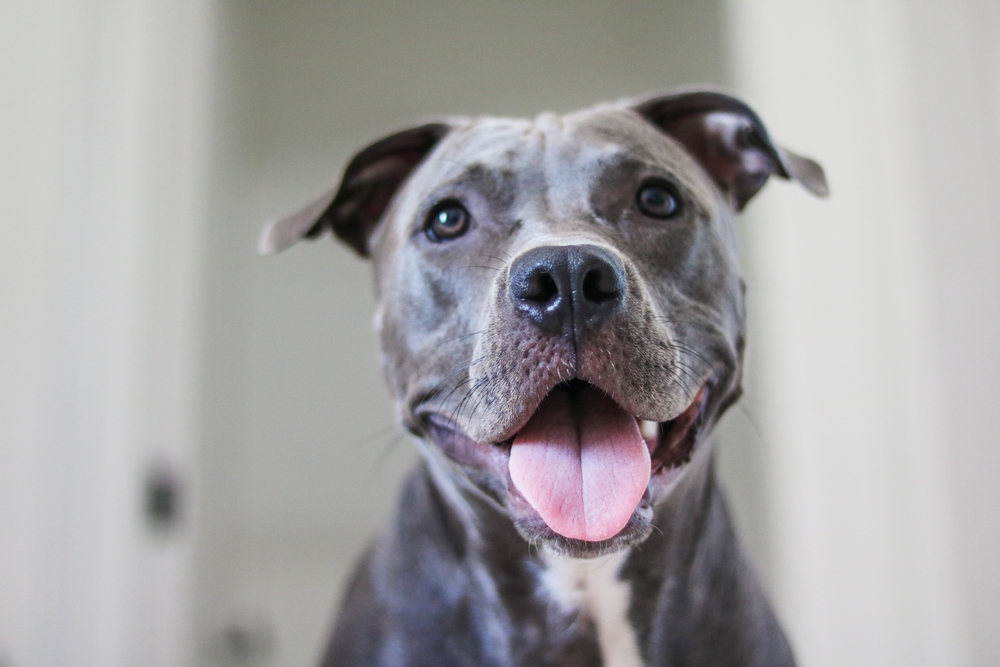
Pitbull Breed Overview
Before we dive into numbers, it’s important to clarify that “Pitbull” isn’t just one breed. The term refers to several breeds within the same family, including the American Pitbull Terrier, the Staffordshire Bull Terriers, the American Bully, and a few others. Each dog breed has its characteristics, especially when it comes to size.
For example, the American Pitbull Terrier tends to be lean and muscular, with weights ranging from 30 to 60 pounds. On the other hand, the American Bully, which was bred to have a stockier frame, can weigh anywhere from 50 to 100 pounds or more.
So when someone asks what is the average Pitbull weight, it depends on which type of Pitbull you’re talking about. Understanding the different breeds helps explain why there’s such a wide variety in size.
What Is the Average Pitbull Weight?
On average, most adult pit bulls weigh between 30 and 60 pounds. However, this number can vary greatly depending on the type of pit bull and its specific genetics. Male pit bulls are typically larger than female pit bulls, with males weighing between 35 and 60 pounds, while females usually range from 30 to 50 pounds.
It’s also important to note that these numbers are averages, not hard rules. Just like people, dogs have individual differences, and some Pitbulls may naturally fall outside of these weight ranges.
The key is to make sure your dog is healthy, no matter where they land on the scale. If you’re wondering how your Pitbull measures up, keep reading—we’ll cover how to assess if they’re at a healthy weight in just a bit.
Factors That Influence a Pitbull’s Weight
Several factors play into how much your pitbull weighs, and understanding these can help you maintain its health.
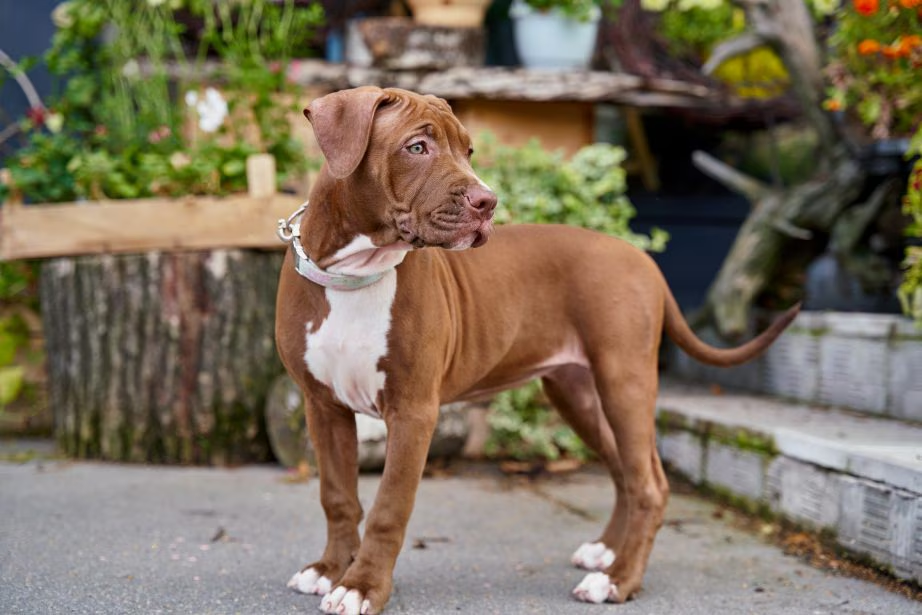
1. Genetics
Just like with humans, a pitbull’s genetics play a major role in determining their size and weight. If your dog comes from a line of particularly large or small pitbulls, it will likely inherit those traits. Some Pitbulls are bred to be stockier with more muscle mass, like the American Bully, while others, such as the American Pitbull Terrier, are naturally leaner.
2. Diet and Nutrition
Your pitbull’s diet is one of the most direct ways to influence their weight. If your dog eats too much or consumes food that’s high in calories but low in nutrients, they’re at risk of becoming overweight.
It’s not just about how much you feed your dog but also what you’re feeding them. A diet heavy in processed, filler ingredients can lead to weight gain and malnutrition. A proper diet should be balanced, consisting of high-quality protein, healthy fats, and the right amount of carbohydrates, vitamins, and minerals.
3. Exercise: Keeping Your Pitbull Fit
Pitbulls are known for their high energy levels and need for regular physical activity. Without sufficient exercise, your dog can quickly gain weight, particularly if they’re being overfed.
Ideally, a Pitbull should get at least 1-2 hours of exercise each day, which can include walks, playtime, and more intense activities like running or agility training. Regular exercise not only burns off excess calories but also helps maintain your dog’s muscle tone and overall fitness.
4. Age: How Your Pitbull’s Weight Changes Over Time
A Pitbull’s weight will naturally fluctuate as they age. Puppies go through rapid growth spurts, and during this time, they may appear skinnier as their bodies focus on lengthening rather than bulking up while senior dogs may need a little more attention to maintain a healthy weight.
During these stages, it’s essential to feed them a well-balanced puppy diet to support their growth without overfeeding. As your dog ages, their metabolism may slow down, causing them to gain weight more easily.
How to Determine if Your Pitbull Is at a Healthy Weight
It’s not just about the number on the scale, there are other ways to determine if your Pitbull is at a healthy weight. One useful tool is the Body Condition Score (BCS), which allows you to assess your dog’s body based on its appearance and feel.
Here are some quick signs to look for:
- You should be able to feel your pit bull’s ribs without pressing too hard, but they shouldn’t be overly visible.
- When viewed from above, your dog should have a noticeable waistline that tucks in behind the ribs.
- From the side, there should be a slight abdominal tuck (the belly shouldn’t be sagging).
If you notice your dog is carrying extra weight or appears too thin, it may be time to adjust their diet or activity level. And if you’re unsure, always consult your vet for guidance.
Common Misconceptions About Pitbull Weight

One common myth is that the bigger, the better when it comes to Pitbulls. Many people believe that a larger Pitbull is healthier or stronger, but that’s not necessarily true. A dog that’s overweight can face several health problems, including joint issues and heart disease.
Another misconception is that all Pitbulls should be heavy and muscular. While some breeds, like the American Bully, are built that way, others, like the American Pitbull Terrier, are naturally leaner. The key is not to compare your dog to others but to focus on their health and fitness.
Final Thoughts
While knowing what the average pitbull weighs can be helpful, remember that weight is just one part of your dog’s overall health. Keeping an eye on their fitness, activity level, and nutrition is just as important, if not more so, than watching the numbers on the scale.
At the end of the day, the goal is to have a happy, healthy dog—whether they fall on the lighter or heavier side of the average weight range. Curious about how to keep your Pitbull in top shape? Don’t miss our next guide on exercise routines designed specifically for Pitbulls!

